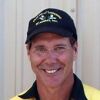One of the most neglected areas of firearms training is acclimation and its role in conditioning the student.
Most firearms training follows the template of shooting fundamentals — grip, stance, sight alignment, sight picture, trigger control, sometimes breath control, and follow-through — then follows the fundamentals with a series of shooting drills that combines the skills.
It’s all good until you (the student) get tested. You try to speed up, shoot at farther distances, or get put under some other type of pressure. Then you start to fail to hit well. The fact that your performance takes a hit when you get put under pressure is not a weakness of character or a hidden flaw. It is simply that you have not acclimated and conditioned yourself properly to perform at that level. Because of that, you have to drop down to a lower level of performance in order to have success. This can be very frustrating.
Restart Your Understanding
The key element that is missing is that you have not acclimated to the skills sufficiently to allow your performance to flow.
The particular area of acclimation we will deal with here is acclimation to pressure, acceptance of recoil, and managing energy. From the beginner to the world-class level, understanding how to remain calm, control your emotions, control the gun and accept recoil energy while simultaneously holding still enough to allow the shot to leave the barrel is the strongest thing you can do to build shooting proficiency. Learning to do this at speed and while under pressure is what true skill is all about.
Isolate the Skill and Then Grow It
When you are learning or relearning a skill, you must focus on isolating the skill without combining it with other skills too soon. As you compress learning time, you compress acclimation time. This compression typically results in deterioration of skill or an inability to rise above a certain level of performance.
Instructors and students often go too fast too soon and do not spend enough time on allowing themselves to acclimate to the task of controlling the gun and controlling their responses.
In a typical training pattern, learning grip, stance, sight picture, and trigger control, then immediately conducting shooting drills is simply too many things happening at once.
Try It This Way
Acclimation to noise, recoil energy, and learning to control bodily responses comes before sighted shooting.
Once you have learned the fundamentals of grip, stance and trigger, hold the gun safely downrange, below eye level. Do not look at your sights, don’t pick a target, and simply fire the gun into the backstop. How well can you maintain a calm mind and hold still behind the gun when it fires? Repeat this process for 20 to 25 shots. If your hand slips, get it connected properly. If you blink or feel your body or grip tighten as you fire or are about to fire, then you are not ready for sighted shooting.
Keep shooting until you can calmly fire the gun without any reaction. This may take 100 shots or more. Trust me — it is time well spent.
The next step is to calmly watch the gun as it fires, without blinking. Not quite as bad as watching a firecracker go off, but similar. Repeat this for 25 more shots.
Now, bring the gun up closer to eye level and calmly fire the gun while watching the front sight move up and down. No target or aiming is allowed at this point. Let the gun fire, cycle, and return. Your task is to simply hold still, watch the sight move and accept this process.
Now, use a horizontal line or download one of my TPC trigger stripe targets and put it up sideways. You will now practice the 50/50 drills.
50/50 Drill #1
Load one round in the gun and bring the gun to the line, hold the sights aligned on the horizontal line and calmly press the trigger. Once you fire the shot, hold it there for a moment, then bring the firearm back down and then — within three seconds — bring it back up and dry fire immediately. Note your reaction when you dry fire the shot. Repeat this sequence 50 times.
50/50 Drill #2
Load one round in the gun, bring the gun up to the line and fire the shot. Immediately reacquire the sights and dry fire the second shot. Note your reaction.
When you can control your reactions on these two drills, you are ready for sighted shooting with multiple shots being fired.
These two drills will bring a huge result in your understanding and awareness of your mind and body responses and will help you control them. They are part of the acclimation training I use for myself and my students all the time, especially when I am trying to increase my speed and precision.
Acclimation training can take anywhere from several days to weeks to really grow or retrain a particular skill. It also doesn’t fit a preconceived lesson plan. However, it is a vital component of training.
These two 50/50 drills will give you a lot of return on your investment of time and ammunition. Use them and go back to them often. Staying acclimated is not a one-time thing. It is a constant thing that needs to be refreshed on a frequent basis.












